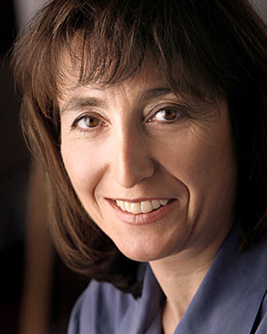- 1610: Galileo
- 1676: Ole Rømer
- 1687: Isaac Newton
- 1781: William Herschel
- 1838: Friedrich Bessel
- 1861: William and Margaret Huggins
- 1912: Henrietta Leavitt
- 1917 Einstein
- 1920: Harlow Shapley
- 1929 Edwin Hubble
- 1948: Ralph Alpher
- 1949: Fred Hoyle
- 1963: Maarten Schmidt
- 1964: Arno Penzias and Robert Wilson
- 1978: Vera Rubin and Kent Ford
- 1989: Margaret Geller and John Huchra
- 1992: John Mather and George Smoot
- 1995: Robert Williams
- 1998: Saul Perlmutter and Brian Schmidt
- 2010: Wendy Freedman
2010: Wendy Freedman Looks to the Future
 |
| Wendy Freedman |
Wendy Freedman is Director of the Observatories of the Carnegie Institution of Washington. Following in the footsteps of the Observatory’s founding director, George Ellery Hale, who led the effort to build some of the world’s largest telescopes of the 20th century, Wendy Freedman is spearheading the effort to construct the Giant Magellan Telescope, with a primary mirror 25 meters (nearly 80 feet) in diameter. When completed the telescope will produce images ten times sharper than the Hubble Space telescope, and view objects 100 times fainter.
Wendy Freedman has an impressive list of accomplishments in astrophysics, including the Hubble Key project, which involved the observation of hundreds of Cepheid variable stars in distant galaxies using the Hubble Space Telescope. The purpose of the study was to improve the redshift-distance scale factor (called the Hubble Constant) that had been discovered by Edwin Hubble early in the 20th century. All measurements of distances in the universe depend on that relationship, including the large scale maps of the universe create by Huchra and Geller. By improving that measurement Freedman contributed to the accuracy of all other studies of cosmos.
In a series of interviews conducted by the National Academy of Sciences, Wendy Freedman discusses the interplay of theories and new telescopes.
The new instruments will play complementary roles. For example, the ground-based Giant Magellan Telescope will take the sharpest images of the faintest objects ever. However, it will not be able to see infrared light that is blocked by Earth’s atmosphere.
Wendy Freedman’s interviews at the National Academy of Sciences can be heard at: